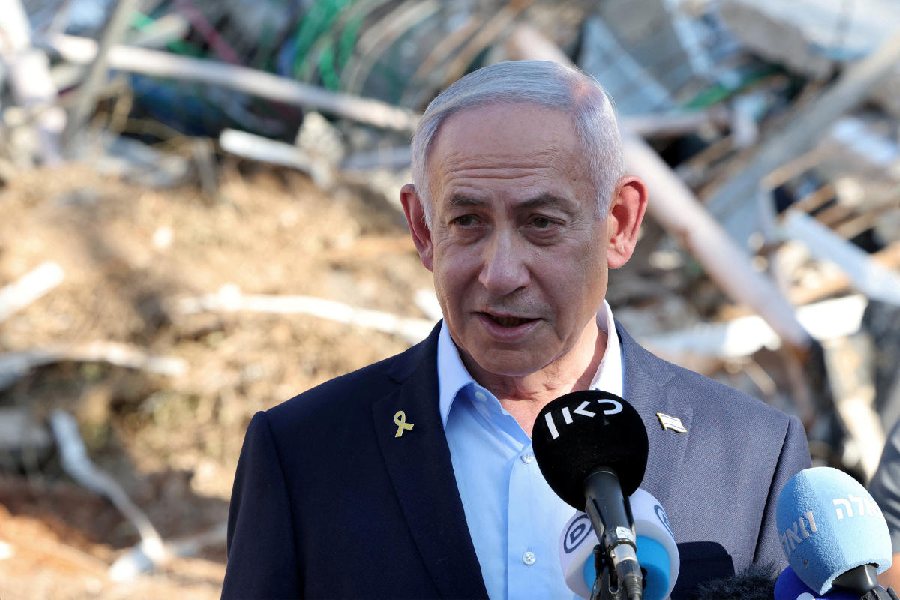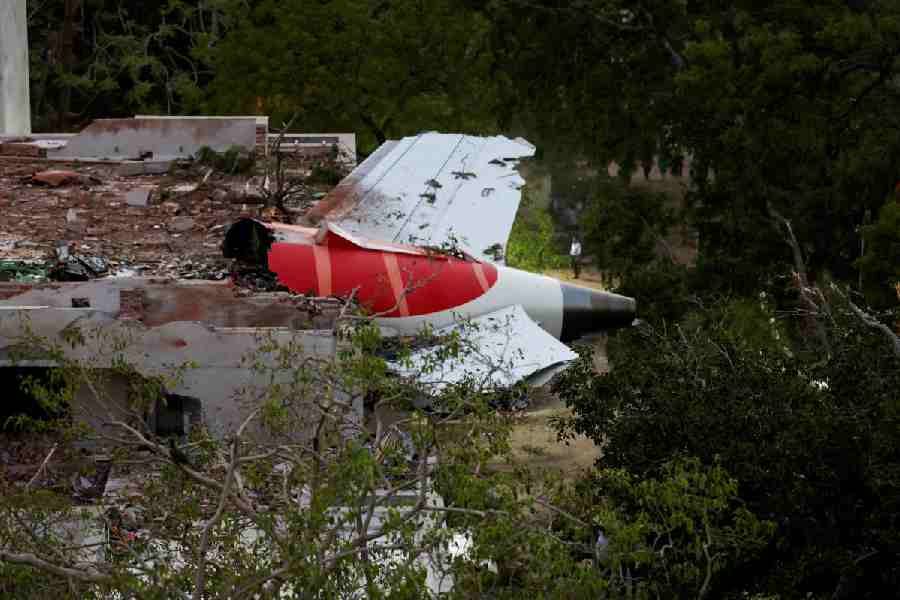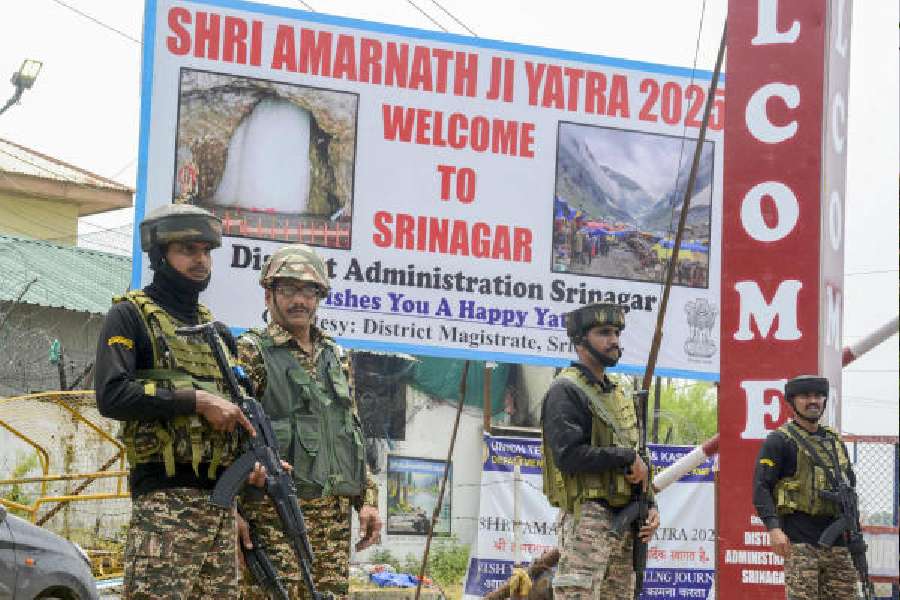|
|
| Reaching out |
Only in Nepal could this have happened to India! In the household of Girija Prasad Koirala, Nepal’s five-time prime minister who passed away 11 days ago, a big effort was under way to locate Shiv Shankar Mukherjee, who was the Indian ambassador in Kathmandu until May 2008. Leading the search was Shekhar Koirala, nephew of “Girijababu”, as G.P. Koirala was popularly known within his country and in India. The Indian embassy told the Koirala family that Mukherjee was in a remote sector of Nepalgunj, doing shilanyas for an India-funded development project: cell-phone signals were poor in that area and it would be difficult to reach the ambassador quickly.
Then Shekhar Koirala unburdened his mind. Girijababu had been taken seriously ill and needed to remain in the hospital where he had been admitted. But Nepal’s tallest politician, even in his advanced age, was refusing to listen to either his doctors or his family. He wanted to get back to his work among his people, insisting that there was much to be done in a country at the crossroads of history. Shekhar Koirala told Indian diplomats in Kathmandu that the only person who could make Girijababu see reason was New Delhi’s man in Kathmandu.
At the end of a Herculean effort, the embassy got across to Mukherjee, who immediately dropped everything, took a flight to Kathmandu and drove straight to Girijababu’s side. The ambassador persuaded him to stay a few days more in the hospital until the leader of the Nepali Congress was nearly fit to resume his hectic schedule of public service.
Between G.P. Koirala and India, however, it was a two-way street. Most Indians in politics who have been dealing with Girijababu since his political family’s involvement in the Quit India movement from their home in exile in North India could never say ‘no’ to him either. His counterparts in Indian politics treated him as one of their own and he became “Girijababu” to many of them, like “Babu” Jagjivan Ram at one time.
G.P. Koirala’s closest friend in Indian politics was the former prime minister, Chandra Shekhar: for a man who represented a one-man organization, Chandra Shekhar had influence across parties that was far in excess of his political strength. Until his death, many prime ministers and most external affairs ministers turned to Chandra Shekhar for advice on Nepal. The only state visit that Chandra Shekhar insisted on and undertook during his short tenure as prime minister was to Kathmandu.
This columnist was in Kathmandu during the height of the Jana Andolan, which terminated absolute monarchy in Nepal in 1990. The live wire, so to speak, at the Indian embassy in Kathmandu then was the deputy chief of mission, G.S. Iyer, a Tamil-speaking Keralite. Once again, only in Nepal could this happen to India: Girijababu — and the other leaders of the Nepali Congress — were under house arrest, but Iyer could meet them in their homes. When Iyer was leaving Nepal on a posting back to New Delhi, Prime Minister G.P. Koirala insisted on breaking protocol and attending his farewell at a hotel in Kathmandu.
For this deputy chief of mission, who was in Hong Kong and Beijing during the Great Proletarian Cultural Revolution and went to Tehran soon after Ayatollah Khomeini’s revolution overthrew the Shah, there was a sense of déjà vu about the popular movement that Girijababu, Ganesh Man Singh and Krishna Prasad Bhattarai were leading.
Just as Khomeini’s speeches were distributed through cassettes in the Shah’s mercilessly repressive Iran, when the Jana Andolan was announced, it had to be done on the private property of Man Singh: political parties were illegal and no public meetings could be held. The proceedings declaring the movement for democracy had to be recorded on cassette and distributed to mobilize the masses.
It is not possible to write a simple obituary of any tall political leader in Nepal, especially someone like Girijababu. Any such attempt inevitably turns into an essay on Indo-Nepal relations. Today’s media, especially sections of the visual media with very little historical memory, often make mountains of molehills in relations between Kathmandu and New Delhi. While Girijababu was undoubtedly a trusted friend of India, it is really no different with almost any other political leader in Nepal. What is needed to sustain India’s special relationship with Nepal is patience, perseverance and sensitivity to a smaller neighbour.
When K.V. Rajan was picked by Prime Minister P.V. Narasimha Rao to be the first career diplomat to be sent to Kathmandu as ambassador after very many years, Man Mohan Adhikari had just taken over as the first democratically-elected communist to become prime minister of Nepal. Adhikari was breathing fire at India in public, demanding the recall of ambassador Bimal Prasad, a political appointee, who, it was alleged, had put all of India’s eggs in Girijababu’s basket. Adhikari was also demanding the abrogation of the 1950 Indo-Nepal Treaty of Peace and Friendship.
A company in London, where Rajan had been deputy high commissioner before moving to Kathmandu, had just brought out a collection of Hindustani classical music and treats by Kundan Lal Saigal, Mohammed Rafi and others. The incoming ambassador procured this collection before leaving London, and presented it to Adhikari when he called on the prime minister, about whom mistrust was rampant in India.
It is a reminder of the strong cultural and sentimental ties which bind India and Nepal that the ‘hardline’ communist melted upon receiving the musical tribute. According to those who have seen Rajan’s report to South Block on that meeting, when the new ambassador brought up the issue of the 1950 treaty, Adhikari — who took part in the Quit India movement from his exile in India — silenced him with a wave of his hand. The 1950 treaty is a treaty of friendship, the prime minister said, adding that friendship treaties between friends are not easily dispensed with. Rajan was the longest serving Indian envoy to Nepal.
Rao’s biggest contribution to neighbourhood diplomacy was perhaps his genuine effort to address the insecurity about India among Nepal’s politicians during that period. India is still reaping the benefits of that policy.
When Ustad Amjad Ali Khan visited Nepal in 1995, the kingdom was in the throes of yet another crisis, and bitterness was high among politicians of different persuasions on the one hand and between the king and political leaders on the other. So the political leaders were somewhat surprised that the king and queen turned up at India House to listen to the maestro since Narayanhiti Palace knew that every major political leader would be at the sarod concert. Unscheduled, all of them stayed for dinner at the ambassador’s residence: in fact, that dinner broke the ice and paved the way for resolving Nepal’s political crisis, although sadly, the kingdom was then buffeted by one crisis after another in quick succession and saw nine governments in five-and-a-half years.
After Girijababu’s death, the most moving tribute was paid by the man who was viewed in recent years as his most implacable foe: the Maoist leader, ‘Prachanda’ Pushpa Kamal Dahal. But Prachanda’s tribute was also revealing of how deeply involved India was in trying to forge a consensus across the border even when the Maoist insurgency was at its height.
If only India’s politicians would emulate Girijababu and Prachanda, who forged a strong bond of friendship and mutual trust in national interest at several secret meetings in Delhi, Noida, Gurgaon and other places, even as the latter was fighting a guerrilla war and the former was ostensibly doing everything to finish off the Maoists.
Was India’s fascination for Girijababu partly because his family had produced three prime ministers — Matrika Prasad Koirala, Bishweshwar Prasad Koirala and Girijababu himself? India’s equivalent of the Koirala family, the Nehru-Gandhis, have also given their country three prime ministers. Whether there will be a fourth on Nepal’s side from the Koirala family is an issue that is now being discussed much in Kathmandu.











